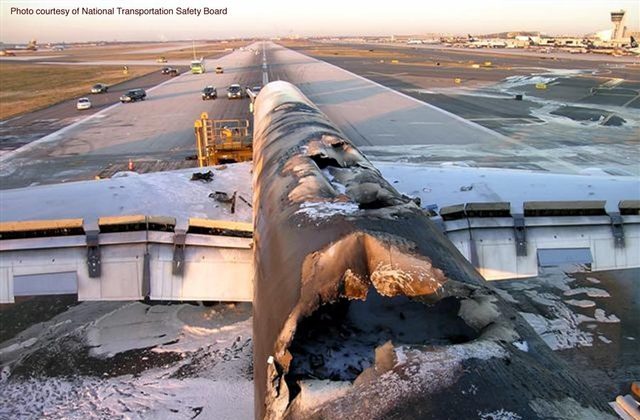Australian Waste Facilities Face 12,000 Fire Hazards Annually Due to Lithium-Ion Batteries
A waste management industry body is urging government action in response to the rising number of fires occurring across the country.
Australia’s waste and recycling facilities are experiencing up to 12,000 battery-related fires each year, leading to an additional average cost of $400,000 (US$266,726) for businesses.
These concerning figures have prompted calls from the waste and recycling sector to address this issue at the Environment Ministers meeting on June 21.
The meeting, which federal environment minister Tanya Plibersek and her state counterparts attended, aims to address the growing concerns surrounding lithium-ion batteries.
Lithium-ion batteries are considered crucial for Australia’s transition to a net-zero future, as they are widely used in various devices such as smartphones, watches, laptops, e-scooters, and electric vehicles.
Survey Findings
According to a June survey conducted by the waste and recycling sector, discarded lithium-ion batteries have ignited 3,115 fires in the past year alone, averaging 5.5 fires per facility.
The survey encompassed 576 waste and resource recovery collection and processing facilities, representing approximately a quarter of all such facilities in Australia.
It was found that these fires accounted for around one-quarter of all annual battery-related fires in the sector.
“In other words, an estimate of around 12,000 fires per year,” the survey highlighted.
The report projected that these fires resulted in average annual costs exceeding $400,000 per business. The highest costs included damage, rebuilding, and replacement (around $174,000), insurance ($114,000), and clean-up fees ($95,000).
Insurance premiums have surged due to battery fires, making it increasingly challenging for the industry to secure insurance for trucks and facilities.
“This crisis jeopardizes our operations and underscores the urgent necessity for supply chain-wide measures and industry support,” stated the Australian Council of Recycling (ACOR) and the Waste Contractors and Recyclers Association, who authorized the survey.
“There are inadequate comprehensively accessible ‘safe disposal’ options for numerous items containing loose and embedded batteries.
“With over 10,000 fires annually across Australia’s waste and recycling systems, our sectors cannot afford to delay.”
Industry ‘Seeing Fires on a Daily Basis’
The apprehension was also raised by Gayle Sloan, CEO of the Waste Management and Resource Recovery Association of Australia (WMRR).
She characterized the situation as a crisis, noting that the industry witnesses fires daily in their waste collection vehicles and facilities, endangering workers and infrastructure.
While acknowledging that the government’s comprehensive national strategy from battery design to end-of-life issues requires time, Ms. Sloan stressed the immediate need for action at all collection points in every state.
“The nation’s environment ministers must take prompt action to establish a safe disposal solution for all batteries,” Ms. Sloan expressed in a statement on June 20.
“The reality is that all items with batteries must have a separate safe disposal pathway to remove them from kerbside bins, trucks, and facilities not designed to collect these potentially flammable devices.”
Ms. Sloan emphasized that ministers must secure funding for a safe collection of batteries.
“Our industry is rapidly approaching a point where we may not be able to insure our trucks and facilities, putting services to the community in jeopardy—and this is not a statement made lightly,” she declared.
“It’s not about funds; it’s about determination, considering the WARR industry contributes over $2 billion (US$1.3 billion) annually to state governments through waste levies alone.
“We seek an explanation from ministers as to why our essential workers are not entitled to a safe work environment?”
Ms. Sloan asserted that urgent attention should also be given to educating the community about the hazards of batteries.
Risk Of Burns, Chemical Exposure, Death
When lithium-ion batteries ignite, they emit various hazardous gases, including highly toxic hydrogen fluoride.
Hydrogen fluoride gas exposure leads to skin and bone tissue destruction, causing permanent injury and potentially death.
The Australian Competition and Consumer Commission (ACCC) has cautioned about the dangers of lithium-ion batteries, describing the risk of injury as infrequent but fatal.
“We are alarmed by the growing incidents of lithium-ion battery fires resulting in property damage and severe injuries, such as burns, chemical exposure, and smoke inhalation,” expressed ACCC Deputy Chair Catriona Lowe in a statement in October 2023.
According to the ACCC, one individual in Australia has already died due to a lithium-ion battery fire, with the government entity receiving 231 product safety reports in the five years leading up to 2023.
The ACCC highlighted that while batteries are crucial for Australia to achieve its net-zero target, their management is a complex issue.
Simple actions like improper charging practices, leaving devices connected for extended periods, and keeping batteries close to flammable materials like soft furnishings can heighten fire risks.
Improper recycling leads to the loss of valuable materials valued between $600 million and $3.1 billion annually in the nation that could have been salvaged from correctly disposed items.
A survey in 2023 revealed that nearly 40% of Australians are unsure how to properly dispose of lithium batteries.
Lithium battery volumes are predicted to increase from 32,000 tonnes to over 100,000 tonnes in the next decade due to the rise of electric vehicles and other batteries reaching their end-of-life phase.





